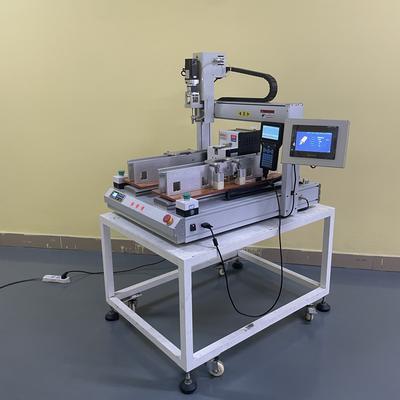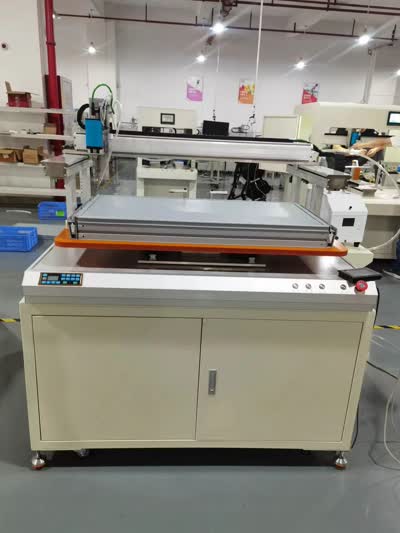Position Feedback & Accuracy in Servo Systems | Industrial Automation Guide

Position Feedback and Accuracy in Servo Machines
In the world of industrial automation, the pursuit of precision is relentless. At the heart of high-performance motion control systems lies a critical partnership: the servo drive and its position feedback device. This relationship is fundamental to achieving the exceptional levels of accuracy, repeatability, and dynamic response required in modern manufacturing and robotics. Understanding how these components work together is key to unlocking the full potential of automated machinery.
The Role of the Feedback Device
Imagine instructing a servo motor to rotate to a specific angle. How does the system know it has arrived at the correct position, or if it has even moved at all? This is the essential role of the position feedback device. It acts as the "eyes" of the servo system, continuously monitoring the motor's actual position, speed, and sometimes even torque. This real-time data is fed back to the servo drive, which compares the actual position (the feedback) to the desired position (the command).
The drive then calculates the error between these two values and adjusts the power supplied to the motor to correct any discrepancy. This continuous loop of command, feedback, comparison, and correction is known as a closed-loop control system. It is this loop that allows servo machines to maintain precise control, compensating for variables like changing loads, friction, and inertia that would otherwise lead to significant errors.
Types of Feedback Systems
Several technologies are employed for position feedback, each with its own advantages for specific applications. The most common types include:
- Encoders: These are the most prevalent feedback devices. They convert rotary or linear motion into a digital signal. There are two primary subtypes:
- Incremental Encoders: Provide information about relative position changes. They output a series of pulses as the shaft rotates, allowing the drive to track movement and direction from a known starting point. They require a homing sequence at startup to establish a reference position.
- Absolute Encoders: Provide a unique digital code for each shaft position, meaning the exact position is known immediately upon power-up, without the need for a homing routine. This is crucial for applications where knowing the position after a power loss is critical for safety or process integrity.
- Resolvers: These are analog devices that are extremely robust and reliable. They operate well in harsh environments with extreme temperatures, vibration, and contaminants where optical encoders might fail. They provide absolute position information and are highly resistant to electrical noise.
Defining Accuracy and Resolution
When discussing feedback, two key terms are often used: resolution and accuracy. While related, they are distinct concepts.
Resolution refers to the smallest change in position that the feedback device can detect and report. It is often expressed in bits or pulses per revolution (PPR). A higher resolution means the system can see finer increments of movement, leading to smoother motion and better ability to hold a position steady.
Accuracy, on the other hand, is a measure of how close the reported position is to the true physical position of the motor shaft. A system can have very high resolution (it can see tiny changes) but poor accuracy (it is consistently off by a measurable amount). Accuracy is influenced by inherent electrical and mechanical errors within the feedback device itself. Factors like mounting tolerances, temperature drift, and electrical signal integrity all play a role.
For ultimate system performance, both high resolution and high accuracy are required. A high-resolution, low-accuracy system will precisely control the motor to the wrong position. A high-accuracy, low-resolution system will be limited in its ability to make fine adjustments.
The Impact on System Performance
The quality of the position feedback directly dictates the performance ceiling of the entire servo system. Superior feedback enables:
- Higher Positioning Accuracy: Essential for tasks like precision machining, assembly, and pick-and-place operations.
- Improved Repeatability: The ability to consistently return to the same position time after time.
- Smoother Velocity Control: Critical for applications involving continuous motion, such as conveyor tracking or spindle control.
- Enhanced Stability: Better feedback allows the drive to tune the system for higher responsiveness without oscillating or becoming unstable.
In conclusion, the position feedback device is not merely an accessory but a core component that defines the capabilities of a servo system. Selecting the right feedback technology with the appropriate balance of resolution, accuracy, and robustness is a critical decision for any machine designer seeking to achieve new levels of speed, precision, and reliability in industrial automation.
| Product Name | Applicable industries |
| Desktop Screwdriver Robot | Medical Device Manufacturing |


